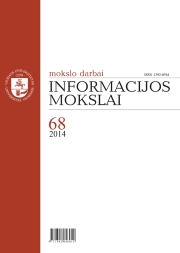Moterų sakytinė istorija: komunikacinis aspektas
WOMEN’S ORAL HISTORY: THE COMMUNICATIVE ASPECT
Author(s): Giedrė Rutkauskaitė, Lijana StundžėSubject(s): Social Sciences
Published by: Vilniaus Universiteto Leidykla
Summary/Abstract: Oral history is defined as a story born of communication interaction between the researcher and the interviewee. It is defined by linguistic, social, ideological as well as communication structures. The purpose of the study is to analyse women’s interviews as sources of oral history by the communicative aspect. The object of analysis is the interview method which is used to gather information. Data collection using the interview method and its interpretation in the science of history are called oral history. Oral history is determined by the specificity of its main source – an interview, which is always subjective and is not suitable for revising the facts (D. Marcinkevičienė, 2008). However, interview is understood not only as information exchange. The process of interview includes also: mutual understanding which allows the interviewer to predict the actions and behaviour of interviewees; interaction, which helps influencing the process of interview; empathy, which allows empathizing with interviewee’s feelings. These elements are analysed theoretically and practically in this article. The interview method is popular among historians, sociologists, anthropologists, journalists, ethnologists. Scientists explore an oral history in various aspects, but there is a lack of a comprehensive approach to the communication aspect in oral history interviews. The theoretical insights are adapted to the analysis of interviews of the Vilnius University Centre of Gender Studies archive “Socialism in Women's Memory”. There were 20 unpublished interviews randomly chosen for the analysis in order to examine the requirements and responsibilities for the interviewer and the interviewee and the impact of the communication process. The article focuses only on the communicative aspects, the interview process, and the requirements for the participants. The analysis shows the multidimensionality and interdisciplinarity of the topic. The article is written using the methods of descriptive and critical analysis of the scientific literature.
Journal: Informacijos mokslai
- Issue Year: 2014
- Issue No: 68
- Page Range: 63-76
- Page Count: 14
- Language: Lithuanian

